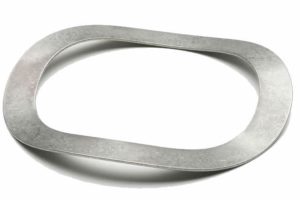
Have you heard of wave springs? Also known as coiled wave springs, they are characterized by a wavy design. When placed on a flat surface, wave springs won’t lie flat. Their wavy design will “lift” parts of them up. Below are five facts about wave springs.
#1) Manufactured Via On-Edge Coiling
While there are exceptions, most wave springs are manufactured via a process known as on-edge coiling. On-edge coiling involves the use of flat wire. Flat wire is placed on a winding machine where it’s coiled on the edges. The end result is a wave spring. Most wave springs are manufactured via on-edge coiling. It’s a fast and effective manufacturing process that’s ideal for this alternative spring type.
#2) The Waves Store Energy
All wave springs have waves. The waves are actually responsible for storing energy. Other types of springs feature a coiled design. Compression springs, for instance, are made of coiled metal that becomes shorter when exposed to a load. The presence of a load will push against a compression spring so that it becomes shorter. Wave springs feature a wavy design. The waves serve a similar purpose by storing the mechanical energy of a load.
#3) Require Mininal Radial Space
One of the advantages of using wave springs over other types of springs is that they require minimal radial space. Wave springs are small. They feature a low profile while consuming minimal radial space. Other types of springs are larger and consume more radial space.
#4) Available in Different Materials
Wave springs are available in different materials. They all feature a wavy design, but some of them are made of different materials than others. You can find them in stainless steel. Wave springs are available in Commercial Type 302 and Government AMS 5906 stainless steel. They are also available in high-carbon steel. High-carbon steel contains a higher concentration of carbon than stainless steel, resulting in increased strength at the cost of corrosion resistance.
#5) Available in 3 Main Varieties
In addition to different materials, you can find wave springs in different varieties. There are three main varieties of wave springs: single turn, multi turn and nested. Single-turn wave springs are the most common. Multi-turn wave springs are taller and more complex. As their name suggests, they feature multiple turns. Nested wave springs, on the other hand, consist of multiple turns that are stacked or nested.
